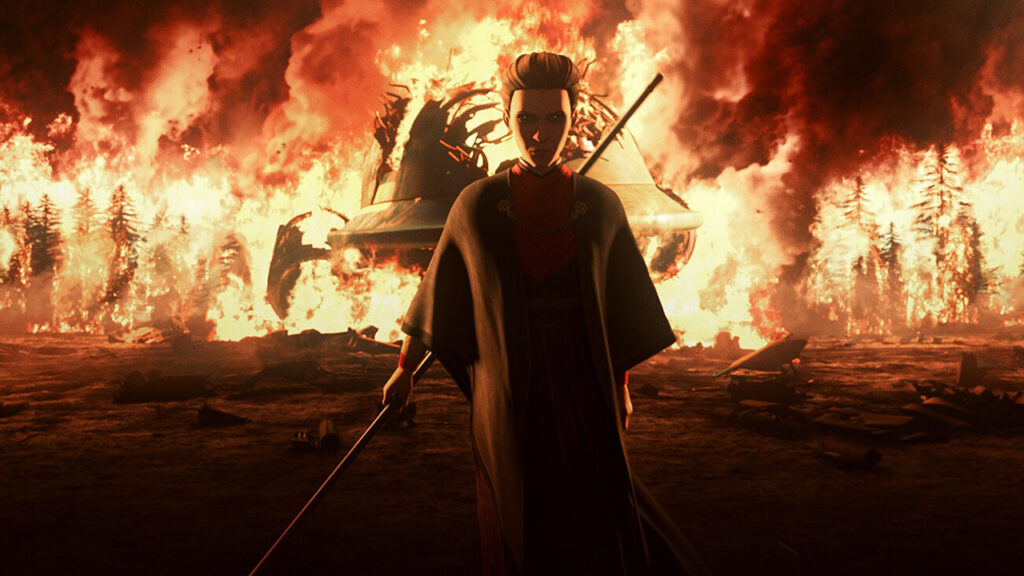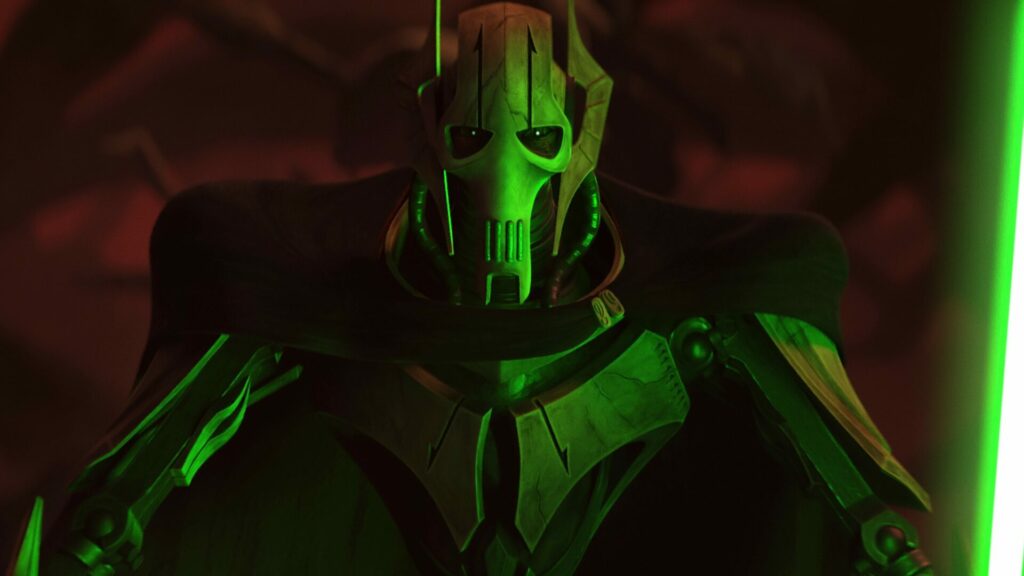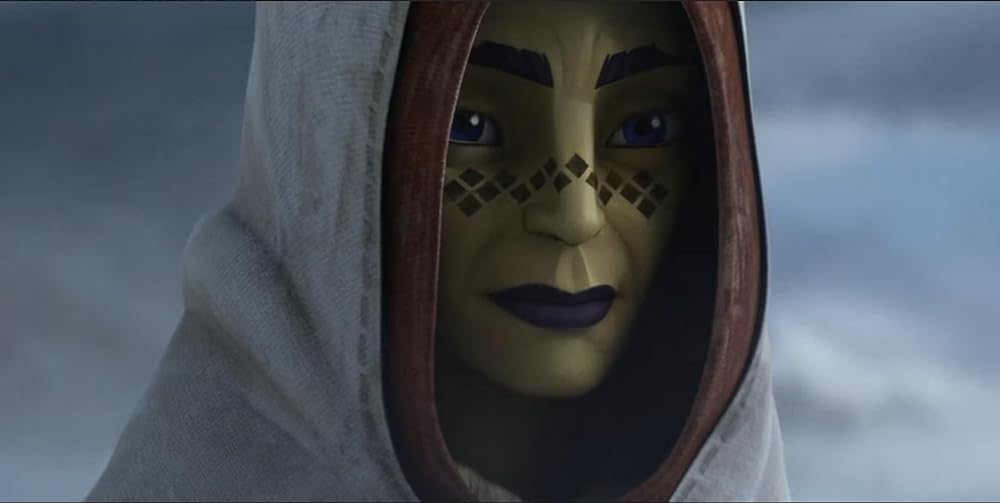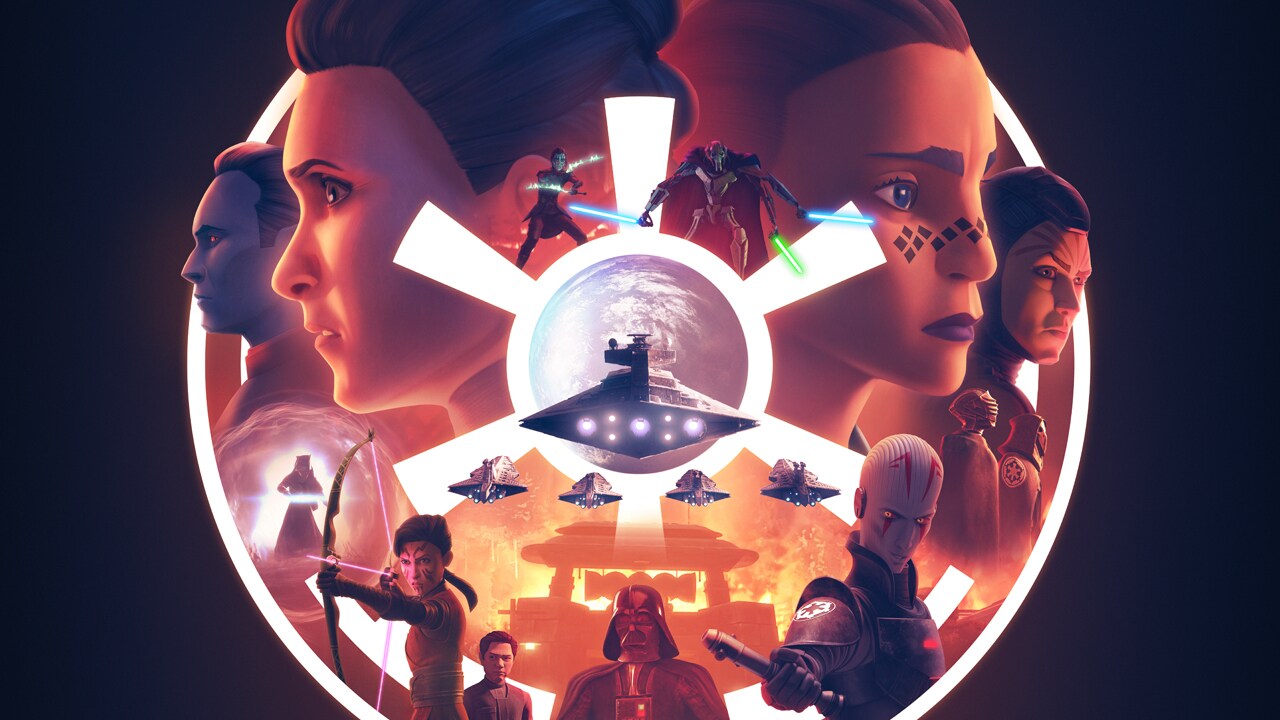Like Tales of the Jedi before it, Star Wars: Tales of the Empire is a balancing act. Two stories have to be told across six animated shorts. Stories that are satisfying by themselves but also fill in canon details; stories that feel best suited to this restricted format and don’t make the viewer wish they had been told across a longer runtime. While enjoyable, Tales of the Jedi struggled with this. The Ahsoka episodes were fine but never felt necessary, while the Dooku shorts were excellent but not entirely fulfilling because they felt like all too brief snapshots of a story worthy of more exploration. Tales of the Empire might not have the heights of those Dooku episodes but it does fair better overall as a collection of shorts.
The first three episodes expand the story of Morgan Elsbeth, and while she was far down the list of characters I wanted the show to focus on, I thought her shorts were solid. Her story fits quite nicely into three bitesize chunks, detailing her character arc well enough while also satisfyingly making connections to the wider storytelling. The final three episodes focusing on Barriss Offee create an issue much like Dooku’s. I broadly like what we got but can’t help feeling it was the Cliff Notes version of the story, too concentrated and begging for expansion, although I love the final short. The two narratives pair quite nicely together. Both characters begin in similar places, literally watching their homes burn, before Morgan commits herself to darkness over 3 acts while Barriss returns to the light.
Tales of the Empire sees Dave Filoni in very much the role George Lucas had during production of The Clone Wars. He gets a story credit on each episode, overseeing the series, but doesn’t write any scripts, leaving that to talented Bad Batch writers. It’s a role I feel suits him and perhaps his live action work would fare better from the same situation. I’m not sure who decided on the disingenuous title Tales of the Empire, however. It’s more just Tales of the Dark Side, which, due to the time period, happen to connect to the Empire.

The Ranking:
6) Episode 5: Realisation
The fifth short is the only one I feel particularly negative about. The short runtime hurts the story, with Barriss’ turn back to the light feeling far too quick and simple. Her leaving the Inquisitorius is the natural direction of the story, I have no issue with it, but the events of the episode don’t feel tailored to her enough. I know it’s Star Wars and we’re dealing with the dark side but I wanted just an ounce more nuance. On her first assignment, Barriss sees her fellow Inquisitor massacre a whole community and kill a surrendering Jedi in cold blood. I could believe most dark side characters could return to the light after witnessing this. I don’t think it narrows in on Barriss’ initial issues with the Jedi from The Clone Wars, the reason she embraced the dark, instead compensating brutality for depth. But I do really like the focus on the Fourth Sister across these three episodes. She gets disappointingly little to do in Obi-Wan Kenobi but it’s the joy of Star Wars to take an existing character and do something interesting with them in another story.
5) Episode 3: The Path of Hate
Morgan’s final short is the season’s slightest. There’s not much going on but what’s there is fine. Much of it is spent putting the final pieces in place for the eventual connection to The Mandalorian and Ahsoka. It’s less the final step in Morgan’s character journey and more the reveal of the destination, with her in her villainous final form. The last few moments are good, seeing her burn the forest and becoming just like her enemy Grievous in the first short. It’s nice to see the New Republic through the envoy Nadura, although perhaps she should have been introduced in the second short before she leaves Corvus. And her contacting Bo-Katan at the end makes very little sense other than needing to happen to explain why she knows Ahsoka is there in The Mandalorian.
4) Episode 1: The Path of Fear
The season begins with the big action episode, very much unlike Tales of the Jedi. It’s pretty brutal at points, returning to Grievous’ biggest victory from The Clone Wars: the Nightsister genocide from the episode Massacre, which continues to inform so much Star Wars storytelling. The short lets Grievous be the dangerous villain he’s rarely allowed to be, and finally makes use of the great new character model designed for his cameo in the final season of The Clone Wars. The season’s single most impressive piece of animation might be young Morgan clawing then punching the ground; it looks so real! The younger voice provided by a different actor never quite fit for me but witnessing the massacre from Morgan’s perspective is vital for understanding her journey, trying to set right what has happened only to end up recreating it for others. I also enjoyed the insight into another witch clan, this time with seemingly more light side-orientated powers.

3) Episode 4: Devoted
Finally the answer to the question we’ve been asking for well over a decade: what happened to Barriss Offee? And it’s satisfying. She becomes an Inquisitor. Briefly. I really like how the character is written in this short. Hers is a believable turn towards the dark side, mixing her legitimate but misguided anger from her final arc in The Clone Wars with manipulation from the Empire, leading to that great moment of her killing Dante. The weight of Barriss’ full journey is there, even if it is unsaid, during those final moments looking at Vader. I would have liked the Grand Inquisitor to mention that he was a temple guard during her trial, to play up that dynamic, but while the episode leaves plenty unexplored what’s there is very good. Seeing the fortress on Nur be built is a fun connection, and it’s intriguing to see a new area with ancient runes, making me wonder if, like Vader’s castle and the Jedi Temple, whether it is built atop an older Sith structure. My only major criticism of the episode is that I wish the trials were more unique; they feel very route one.
2) Episode 2: The Path of Anger
The second short gives Tales of the Empire its one glimpse into the machine of bureaucracy and corruption that is the Empire. The opening scene is great, with Morgan trying and failing to navigate the Empire’s greed. Even just the classic Imperial designs do a lot of work in a series otherwise devoid of them, from the Imperial Star Destroyers mixed with the Venators, and the classic costuming. Morgan is at her most complex in this instalment. There’s still some semblance of her initial well-meaning ideals but she’s driven by revenge and becoming darker, her new connection to the Empire becoming a catalyst for her change.
The episode also makes great use of the tapestry of Star Wars, bringing in elements from other shows in a way that feels natural. Rukh from Rebels was a cool surprise, kept out of the trailers, and their fight is very well executed. Morgan’s alliance with Thrawn is on the surface merely setting the stage for Ahsoka but it actually also delivers important information I felt was lacking from that show. I never cared for Morgan as a character until I watched this episode. This is what got me invested in her story, after it had already ended. The Path of Anger is an important missing piece of storytelling but also a good short unto itself.
1) Episode 6: The Way Out

I could see people not liking this episode. It’s a short very much not as advertised. It’s a bold choice to try and get away with calling it Tales of the Empire. If anything, it’s an episode of Tales of the Jedi. But it’s the perfect next step, perhaps final step, on the journey of Barriss Offee. I love it. It’s a different, beautiful little short full of big Star Wars ideas. We catch up with Barriss presumably some years after leaving the Empire, literally spending her time healing wounds, expending her life force to help others and redeem herself. She’s now more of a Jedi than ever, even refusing to fight, like Luke at the end of The Last Jedi. And the music by the Kiners, as always, is superb and aids in the emotional storytelling.
It’s a short that really feels like its own little story, informed by the past but not just the third part of a three-part story, which I like. I love the ambiguity of the cave because the details aren’t so important when the emotions are as clear as they are. It’s a good metaphor: the way out of the cave, out of the dark, is the way out of the Empire, the dark side. Barriss found the exit and now she helps Lyn do the same. Did Barriss survive? Probably, stabs to the gut are survivable in every show now, and Filoni can’t let any of his characters go. I’m sure she’s in a position to appear in either the next animated show or Ahsoka season 2, but I don’t care. I’m happy if this is the end, even if she survives. Character resolution shouldn’t always mean death. Dark side stories aren’t always my favourite because it’s not really what Star Wars is about. I love therefore that Tales of the Empire was able to end on an episode like this: an ending of hope.








